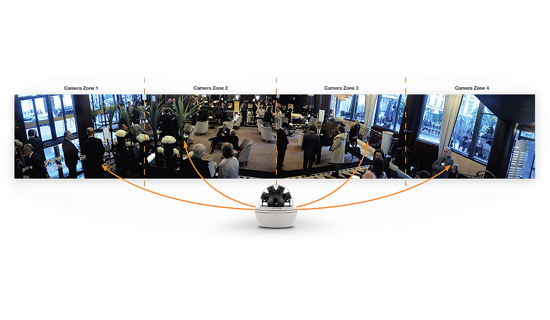
 SNBlog
SNBlog
By Tyler Graham
Surveillance cameras are perhaps one of the most visible aspects of a security system to the general public. They are mounted to the exterior of buildings, along long corridors in healthcare facilities and schools and throughout the interior of retail stores. However, in recent years, the number of surveillance cameras being deployed in the field has slowly started to decrease and for good reason.
The introduction of multi-sensor cameras has begun to change the surveillance landscape as one camera containing this technology can see a larger field of view compared to their single sensor counterparts. What once took four cameras to provide 360 degrees of coverage can now be accomplished with one multi-sensor camera. This is a trend that has steadily grown over the past three years.
A single camera containing multi-sensor technology has the ability to capture 360 degrees of view. Each camera is equipped with a four-image sensor fixed lens, so essentially one camera can do the work of four individual cameras. These cameras are weather proof and designed to cover a wide range of ground such as a parking lot, but places such as a school gymnasium can benefit from the technology as well.
For the security end user there are several benefits to using multi-sensor cameras. First, the cost of surveillance cameras can be reduced significantly while simultaneously giving end users full and complete surveillance coverage. For example, two standard dome cameras can cost close to the same as a single multi-sensor equipped camera. This means that if the area under surveillance requires three or more traditional cameras to get a full picture, a single multi-sensor camera could accomplish the same as those three. This also means lower licensing fee costs, which corresponds with the number of cameras used, not the number of sensors within a camera. Second, end users can expect the cost of installation to decrease. Instead of mounting four separate cameras in four separate locations, increasing camera set-up and installation time, in many cases one camera can be mounted on the corner of a building, or in the middle of a large space.
This niche technology is also replacing PTZ cameras as far as ease of use and functionality. A PTZ camera’s inherent flaw is that it needs an operator, and the operator must be looking in the correct direction to detect an event. If the camera is pointing at two degrees and an event happens at 200 degrees, it will be missed. If instead there is a multi-sensor camera pointed every 60 degrees, there will be full coverage at all times. This is especially useful for businesses that do not have guards to monitor PTZs. One camera is doing the work of four cameras, plus a human operator.
Overall, multi-sensor cameras provide numerous benefits, but end users should still ask themselves a few key questions before investing in multi-sensor cameras. Is it going to be more beneficial to install this camera in the long run because the cost of ownership is lower? Or is the space that requires coverage not very large, so is it worth it to install a multi-sensor camera? Here the determining factor is the number of traditional cameras required to cover a single space. If you can rationalize that a third camera is needed, then a multi-sensor camera which can take the place of all three may be the way to go.
